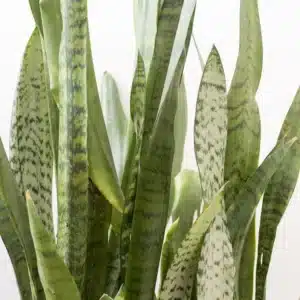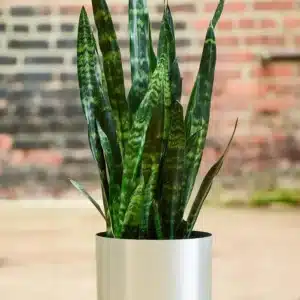Snake Plant, Viper's Bowstring, Viper's Bowstring Hemp, African Spear, Good Luck Plant, Goldband Sansevieria, Magic Sword, Variegated Snake Plant, Gold Edged Snake Plant, Devil's Tongue, Mother-in-Law's Tongue





The ‘Snake Plant’ thrives in partially shaded areas receiving 2-4 hours of sunlight daily, although it can adapt to full sun or full shade. It prefers moderately acidic, well-drained, sandy or loamy soil with a pH range between 5.6 and 6.0. A potting mix blended specifically for cactus or succulent plants is ideal for indoor-grown plants. Potted plants are widely available from most local garden centers during the spring and summer. A mature plant can be propagated by dividing it into sections and leaving the roots intact for transplanting. Offshoots that form at the base can also be cut off and replanted. A healthy leaf may easily be removed and rooted in a glass of water or moist growing medium. ‘Snake Plants’ are also grown from seed, but it can take 3 to 6 months before new plants emerge.
Overwatering is the most frequent cause of death to the ‘Snake Plant.’ The surrounding soil must be allowed to thoroughly dry between each watering. The plant may need to be watered every 3 to 4 weeks during the growing season but should only be watered at 2-month intervals in the winter. It will suffer in temperatures lower than 50 degrees Fahrenheit. ‘Snake Plants’ are slow to grow and rarely need repotting. They prefer to be slightly rootbound. Plants grown in bright light may need repotting every 3-5 years.
It is beneficial to remove damaged leaves to promote new growth. The best time to prune is during the spring or summer. The tallest leaves can be removed, if desired, to control the plant’s height.
It is important to keep ‘Snake Plants’ healthy by providing optimal growing conditions. Plants stressed by over or under-watering succumb easier to pests, such as thrips, scale, aphids, spider mites, or whiteflies. All of these result in the curling or mottling of leaves. They can be deterred by the application of horticultural oil or insecticidal soap, used according to the directions on the product label. Overwatering results in fungal infections or root rot, for which there is no treatment.








